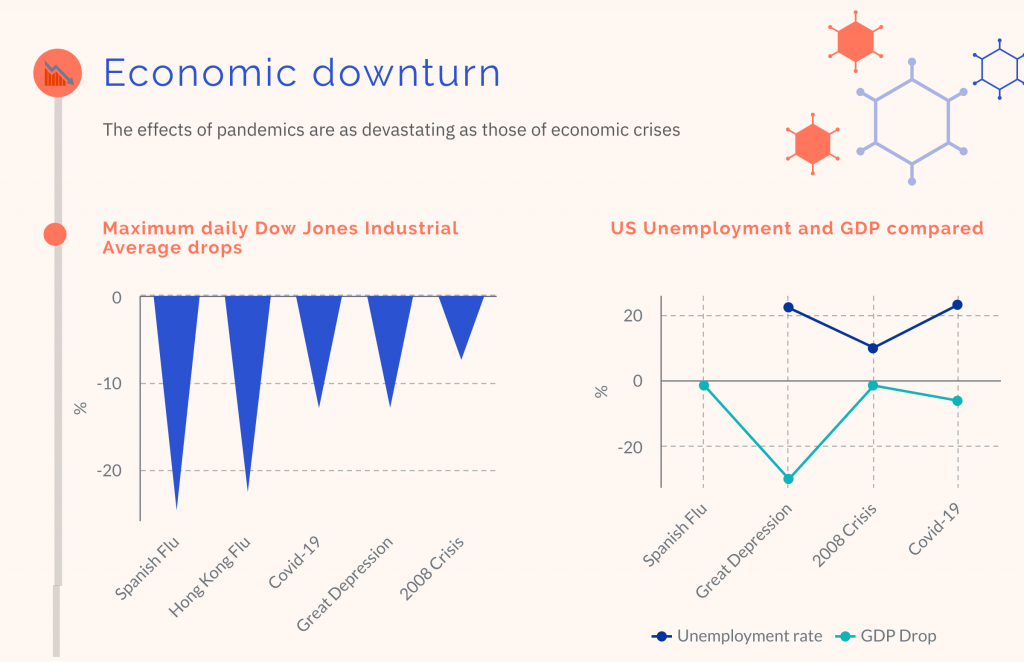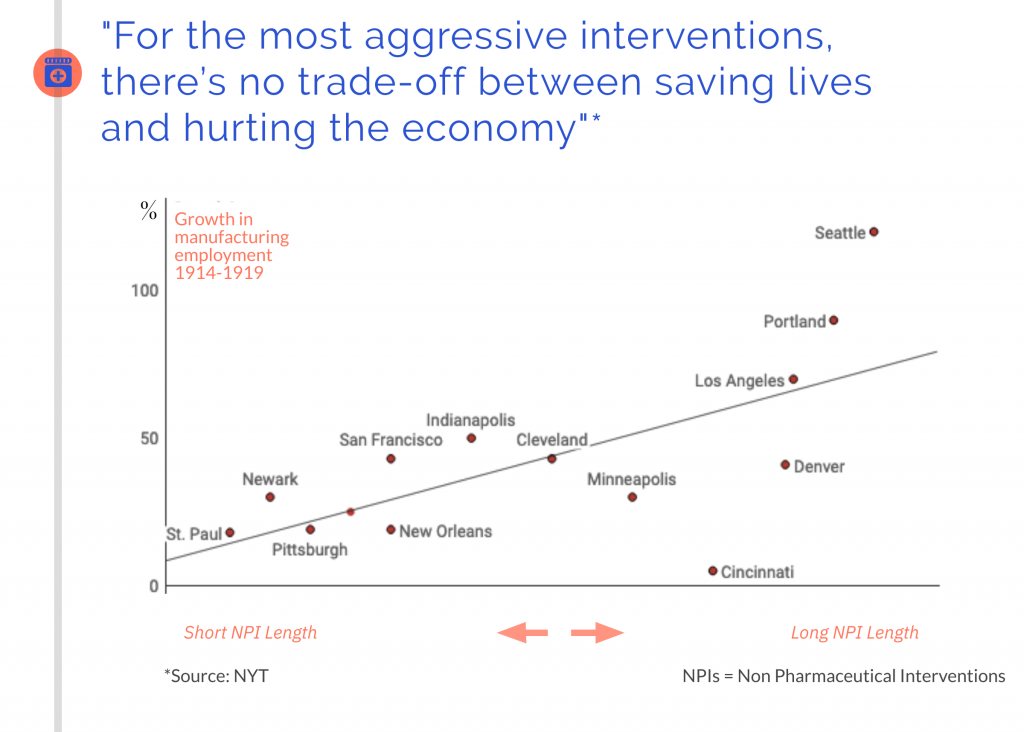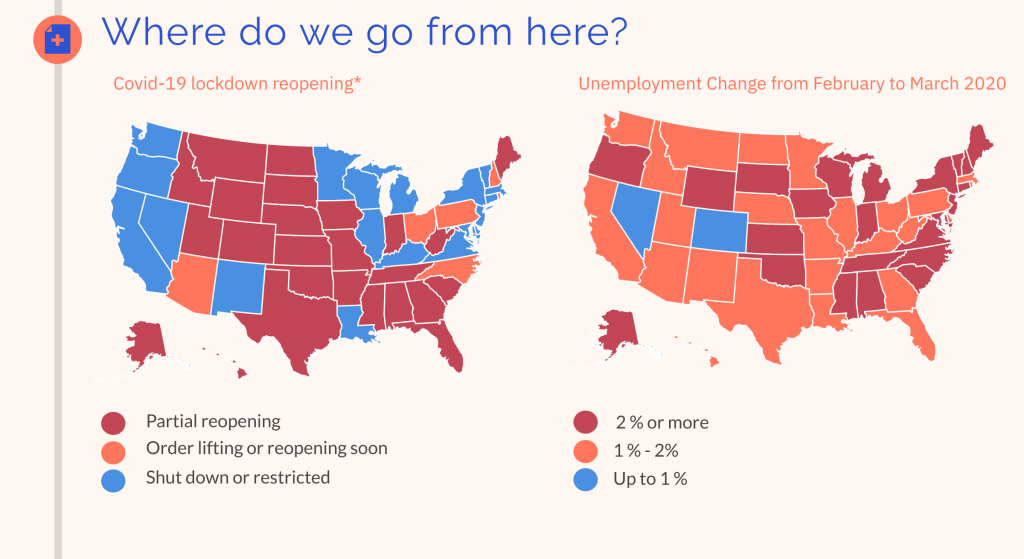The Covid-19 pandemic has delivered a severe blow to the global economy. In 2020, the US economy is expected to contract by 5.9 percent. The immediate economic pain of the coronavirus’ related shutdowns combined with this gloomy growth outlook is putting immense pressure on policymakers to reopen the economy as quickly as possible. As of May 8, a majority of US governors are loosening lockdown restrictions to restart their states’ economies. This edition of the EconoGraphic compares Covid-19’s impact with previous economic shocks, presents data on how public health restrictions influenced economic recoveries during the Spanish Flu, and contrasts US states’ reopening decisions with unemployment trends across the country.

To better understand how state and local governments’ health measures against Covid-19 might shape the economic recovery across the United States, the Spanish Flu offers valuable insights. In response to the Spanish Flu, which infected an estimated “one third of the world’s population” from 1918 to 1920 and killed between 500,000-700,000 Americans, governments put in place non-pharmaceutical interventions (NPIs) very similar to those used to ‘flatten the curve’ of the Covid-19 outbreak. NPIs to control the spread of the Spanish Flu included strict restrictions on businesses, quarantining of individuals who contracted the virus, and prohibition of larger gatherings.

As the first graphic highlights, pandemics, such as the Spanish Flu and Covid-19, can cause economic damage on par with or worse than endogenous shocks like the Great Depression and the Global Financial Crisis. The second graphic presents research by the economists Correira, Luck, and Verner on how US cities, which implemented NPIs for a longer period compared to their peers during the Spanish Flu, tended to have higher economic growth and lower unemployment over the medium- and long-term. In addition, the researchers stress the importance of cities adopting broad NPIs at an early stage. US cities, which followed this blueprint during the Spanish Flu, saw a “relative increase in manufacturing employment, manufacturing output, and bank assets in 1919”, while also recording lower mortality rates than cities that implemented NPIs at a relatively later stage and/or for a shorter period of time.

Using this model, and based in part on reporting in the New York Times, we assess the potential implications of US states’ responses to the Covid-19 crisis. As one might expect, a month and a half after the first statewide lockdowns there appears to be a rough correlation that shows states with stricter NPIs experiencing a stronger rise in unemployment. Going forward, we expect states that are reopening their economies first will trigger a significant recovery in the short-term. However, we see serious downside risks for states, which are opening their economies despite still rising infection rates such as Alabama and Kansas, of a brief economic recovery followed by a return of the virus and a second shutdown. Over the medium and long-term, we conclude that states, which are heeding the lessons from the Spanish Flu, are better positioned to weather this crisis. By having implemented comprehensive NPIs at an early stage and keeping them in place longer than their peers, these states are likely to recover from the Covid-19 crisis with relatively stronger growth and employment numbers, and most importantly lower mortality rates.
